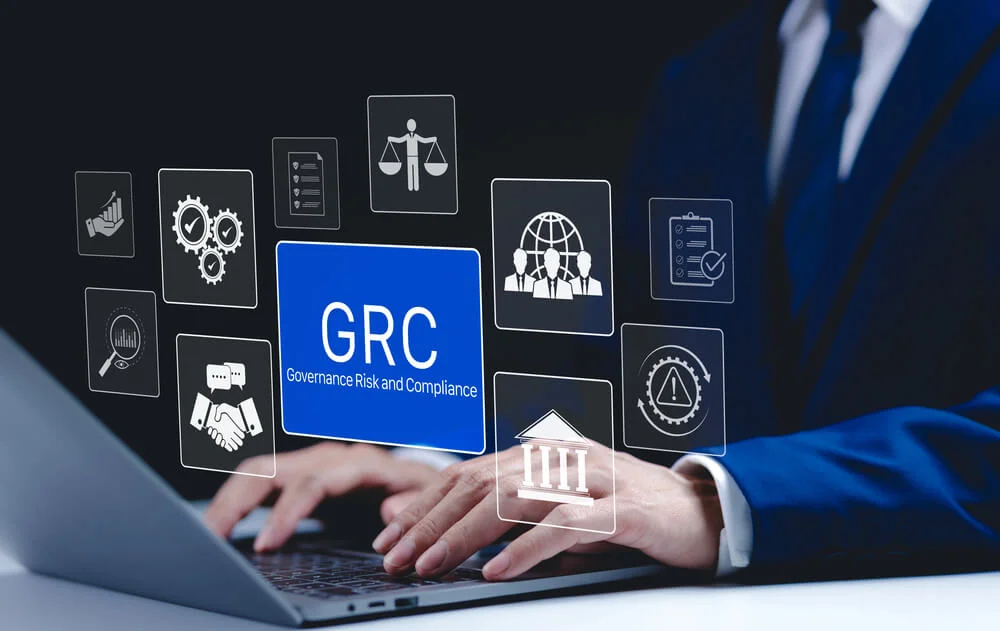Unlocking the Benefits of Systematic Vendor Management: Why It Matters for Your Business Success
Vendor management is a critical component of business operations that involves the management of relationships with suppliers, contractors, and other third-party vendors. Effective vendor management is essential for organizations that rely on vendors to provide products or services and can have a significant impact on an organization’s success.
We’ll explore the top reasons why having a systematic approach to vendor management is a priority for organizations. From risk mitigation to cost optimization, regulatory compliance, improved quality and service, and strategic alignment, we’ll examine the benefits of a well-executed vendor management program and how it can help organizations stay competitive in their industries.
Whether you’re a small business owner or a procurement professional at a large organization, this blog will provide valuable insights into why vendor management matters and how to build a successful vendor management program that supports your organization’s goals and objectives.

Mastering Vendor Risk: The Key to Business Resilience
Risk mitigation is a crucial aspect of vendor management. The failure of a vendor can cause a range of problems for an organization, including operational disruption, legal and financial issues, reputational damage, and loss of revenue. Therefore, a systematic approach to vendor management is essential to identify potential risks and implement appropriate risk mitigation strategies.
One way to mitigate risks is to conduct a thorough vendor evaluation process before engaging with them. This can include conducting background checks, checking references, and reviewing their financial stability, among other factors. By conducting due diligence, organizations can identify potential risks and select vendors that are more likely to perform as expected.
Another way to mitigate risks is to establish clear performance metrics and service level agreements (SLAs) with vendors. This ensures that expectations are clear from the beginning and that vendors are held accountable for their performance. If a vendor is not meeting the established metrics, the organization can take action, such as renegotiating the contract or terminating the relationship.
Finally, it is essential to have a contingency plan in place in case a vendor fails to meet expectations or experiences an unexpected event. This can include identifying alternative vendors or developing an internal process to handle the vendor’s responsibilities temporarily.
Cost Optimization Made Easy
Cost optimization is another important reason why having a systematic approach to vendor management is a priority for organizations. Vendors can be a significant source of expenses for an organization, and effective vendor management can help organizations optimize their costs in several ways.
One way to optimize costs is to negotiate better pricing and terms with vendors. This can be achieved by conducting market research to determine fair pricing, leveraging the organization’s purchasing power, and negotiating favorable terms and conditions.
Another way to optimize costs is to reduce the number of vendors an organization works with. Consolidating vendors can help reduce administrative costs, simplify vendor management processes, and increase the organization’s bargaining power. For example, an organization that works with a single supplier for all its office supplies can negotiate better pricing and terms than if it works with several suppliers.
Effective vendor management can also help organizations improve the efficiency of vendor-related processes. This can be achieved by establishing clear processes and workflows, automating manual tasks, and leveraging technology to streamline vendor management. For example, an organization can use a vendor management system (VMS) to manage vendor relationships, automate invoice processing, and track vendor performance.
By optimizing costs, an organization can free up resources to invest in other strategic initiatives, such as product development or marketing. This can help organizations stay competitive and achieve their long-term goals.
Stay Compliant and Avoid Fines
Regulatory compliance is another critical reason why having a systematic approach to vendor management is a priority for organizations. Many industries are subject to regulations related to vendor management, such as data privacy and security regulations, anti-corruption laws, and environmental regulations, among others. Non-compliance with these regulations can result in significant legal and financial consequences, including fines, reputational damage, and legal liability.
To ensure regulatory compliance, organizations must have a systematic approach to vendor management that includes due diligence, ongoing monitoring, and clear contract terms and conditions. For example, in the case of data privacy and security regulations, an organization should conduct due diligence to ensure that vendors have appropriate data protection measures in place, such as encryption and access controls. Additionally, the organization should include clear data protection provisions in vendor contracts and monitor vendor compliance with these provisions on an ongoing basis.
Similarly, in the case of anti-corruption laws, organizations should conduct due diligence to identify potential risks related to bribery or other corrupt practices. They should also include clear anti-corruption provisions in vendor contracts and implement ongoing monitoring and auditing to ensure compliance.
Having a systematic approach to vendor management can help organizations stay up-to-date with changing regulatory requirements. For example, if a new regulation is introduced, the organization can review and update its vendor management processes and contracts to ensure compliance.
Better Quality, Better Service
Improved quality and service is another important reason why having a systematic approach to vendor management is a priority for organizations. Vendors can be critical partners in delivering high-quality products and services to customers, and effective vendor management can help ensure that vendors meet or exceed expectations.
One way to improve quality and service is to establish clear performance metrics and service level agreements (SLAs) with vendors. These metrics should be aligned with the organization’s objectives and should include measures of quality, reliability, and timeliness, among other factors. By establishing clear metrics, organizations can hold vendors accountable for their performance and ensure that they meet or exceed expectations.
Another way to improve quality and service is to conduct regular performance reviews with vendors. These reviews should include a discussion of the vendor’s performance against established metrics, as well as any areas for improvement or feedback. By conducting regular reviews, organizations can identify opportunities for improvement and work with vendors to address any issues.
Effective vendor management can also help organizations improve the quality of their products and services by leveraging the expertise of their vendors. For example, vendors may have specialized knowledge or experience that can help improve the quality of an organization’s products or services. By collaborating with vendors and sharing best practices, organizations can improve the quality of their offerings and stay competitive in their industry.
By improving the quality and service provided by vendors, organizations can enhance their reputation and customer satisfaction. This can lead to increased customer loyalty and revenue over the long term.
Align for Success
Strategic alignment is another important reason why having a systematic approach to vendor management is a priority for organizations. Vendors can play a critical role in supporting an organization’s strategic objectives, and effective vendor management can help ensure that vendor relationships are aligned with the organization’s overall strategy.
One way to align vendor relationships with the organization’s strategy is to conduct a strategic vendor analysis. This analysis should identify the vendors that are critical to achieving the organization’s objectives, as well as any potential risks or dependencies associated with these vendors. By understanding the strategic importance of each vendor, organizations can prioritize their vendor management efforts and allocate resources accordingly.
Another way to align vendor relationships with the organization’s strategy is to establish clear vendor performance goals and objectives. These goals should be aligned with the organization’s overall strategy and should include measures of quality, timeliness, and cost-effectiveness, among other factors. By establishing clear performance goals, organizations can ensure that vendor relationships are contributing to their strategic objectives.
Effective vendor management can also help organizations identify opportunities for innovation and growth. For example, vendors may have new products or services that can help the organization stay competitive in its industry. By collaborating with vendors and sharing best practices, organizations can identify new opportunities and develop innovative solutions to meet their strategic objectives.
By aligning vendor relationships with the organization’s strategy, organizations can reduce risk and increase resilience. For example, if a critical vendor is no longer able to provide its services, an organization with a strategic vendor management program in place can quickly identify and engage alternative vendors to avoid disruptions.
How Systematic Vendor Management Can Help You Succeed
Having a systematic approach to vendor management is critical for organizations that rely on vendors to provide products or services. By mitigating risks, optimizing costs, ensuring regulatory compliance, improving quality and service, and aligning vendor relationships with the organization’s strategy, businesses can achieve a competitive edge and drive long-term success.
A well-executed vendor management program can help organizations identify new opportunities, innovate, and grow, while reducing risk and increasing resilience. By prioritizing vendor management efforts and allocating resources accordingly, businesses can ensure that vendor relationships are contributing to their overall objectives and driving their success.
Whether you’re just starting or have an established vendor management program in place, continually evaluating and improving your vendor management practices is essential. By doing so, you can ensure that your vendor relationships remain aligned with your business strategy and support your organization’s long-term success.
For further information on how Compyl can help your organization, please contact us to see if we are a good fit for your needs.




